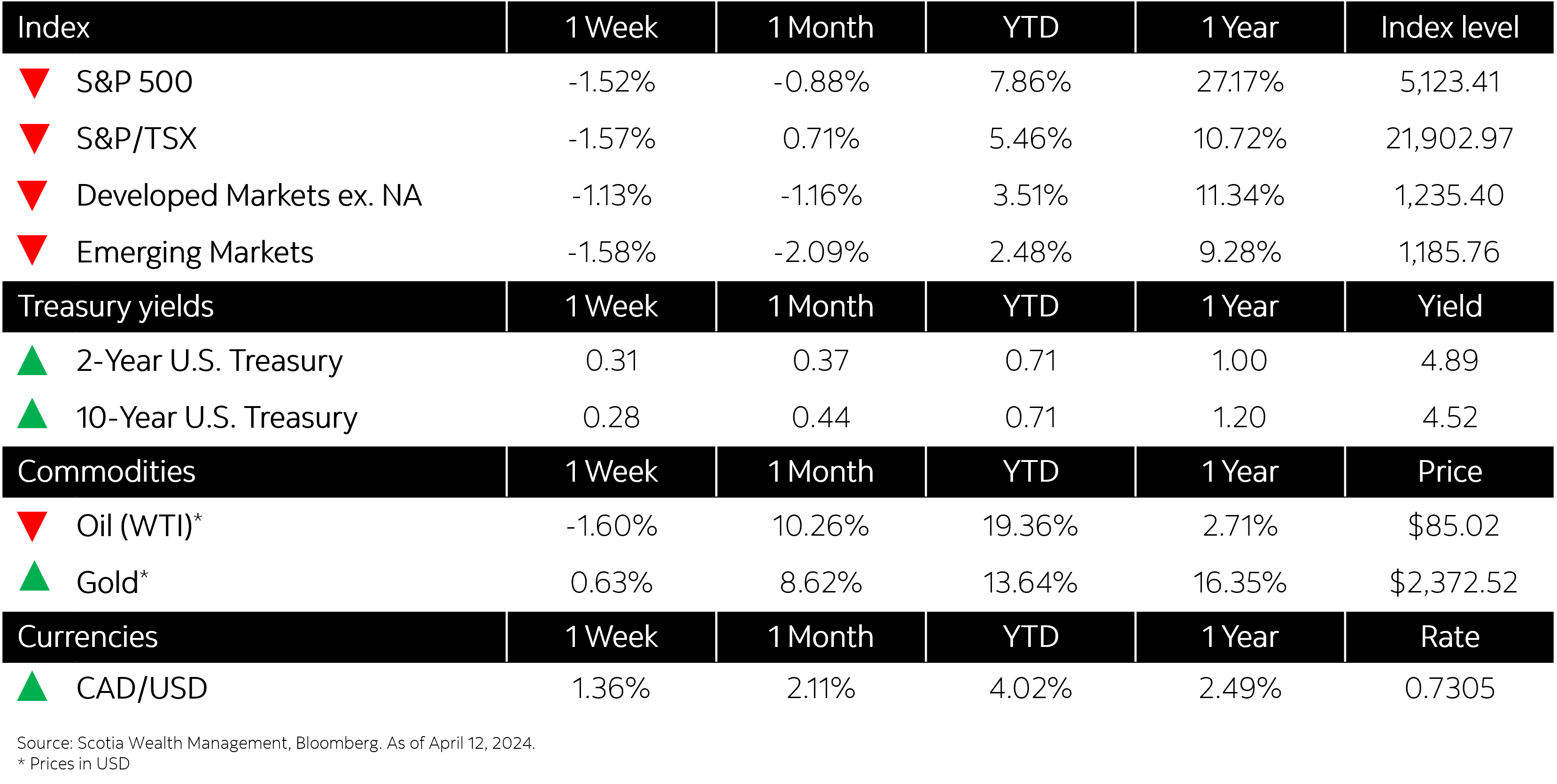
Market Watch: April 12
This week’s highlights
- Global equities trade lower as risks begin to pile up
- Yields push new highs as rate cut expectations unwind
- Bank of Canada holds rate steady, says it’s more confident in inflation easing
- Higher gas and rents keep U.S. inflation elevated, likely delaying Fed rate cuts
- European Central Bank holds rates at record highs, signals upcoming cut
- In the news: OPEC’s oil demand view unchanged, supply growth revised downwards
Week in review
Global equities trade lower as risks begin to pile up



